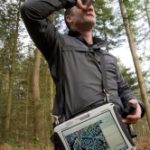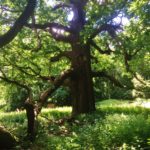The National Forest Inventory
We have a 5 year contract working for the Forestry Commission on the National Forest Inventory (NFI), the most in depth survey carried out on Britain’s woodland and trees to date. The NFI provides an extensive and unique record of key information about our forests and woodlands, providing accurate information about the size, distribution, composition and condition of our forests.
Link: http://www.forestry.gov.uk/inventory
Woodland Management Plans
Creating a woodland management plan can help landowners develop and communicate objectives and work proposals for their woodland. We can work with you towards your objectives, whether you are conservation minded or want to grow and sell timber. We have proven experience of getting woodland management plans and felling licenses approved by the Forestry Commission by clearly planning how a woodland will be managed sustainably and how it will be monitored. We can help landowners with all woodland related grant applications and felling licences.
Link: https://www.gov.uk/government/collections/countryside-stewardship-woodland-support
Ancient Woodland Survey and Assessment
We have worked with The Woodland Trust and Maydencroft Ltd to identify, survey and advise on ancient woodland sites, specifically plantations on ancient woodland sites and invasive species in ancient woodland sites.
The reports have been produced as part of the Woodland Trust’s Ancient Woodland Restoration Project, a scheme focused on the restoration of Planted Ancient Woodland Sites.
Link: http://www.woodlandtrust.org.uk/about-us/ancient-woodland-restoration/what-we-are-doing/
Phase 1 Habitat Surveys
We can advise landowners and developers on the JNCC Phase 1 habitat survey, which is the commonly used standard in the preparation of environmental impact statements and other ecological baseline surveys.
The Phase 1 Habitat Classification and associated field survey technique provide a standardised system to record semi-natural vegetation and other wildlife habitats. The approach is designed to cover large areas of countryside relatively rapidly, presenting the user with a basic assessment of habitat type and potential importance for nature conservation.
Link: http://jncc.defra.gov.uk/page-4258








